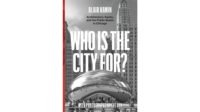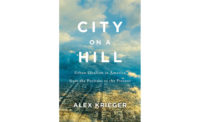Not long ago, a small midblock building was demolished not far from my office in SoHo. The excision was a revelation. Because of a sequence of low buildings in succeeding blocks, it was suddenly possible to look through a remarkable cut in the city that reconfigured the backs of buildings with their principal facades on the avenues into a long series of fronts. The space is like none other in New York in its proportions and architectonic character, the elegant austerity of the backs of buildings with ornamented facades making a place both lyrical and tough. Looking at it, it’s easy to imagine further transformations, an accessible swath of public space stretching five blocks through the heart of town.

The uneven development of the city—its cycles of boom and bust—drive the production of innumerable morphological accidents, yielding spaces of unexpected character. Behind the building where I had my office several years ago was a parking lot, flanked by an old cobbled street. My building, 14 stories high, was on the eastern side of the space. The other sides were flanked by much lower structures—two-to-six stories—and the accidental plaza that resulted was of a rare proportion. It would have made a superb public space, easily captured and configured.
Unfortunately, nature and real estate abhor a vacuum: This space was eventually occupied by another 14-story building designed to look like the twin of the first, and the plaza was lost forever. It will also be the fate of the demolished site that launched the view of the blocks-long cut here in SoHo to be refilled by a rising tower. These evanescent states are both part of the genius of the development system, poignant short-lived urban phenomena, and tragic exemplars of its limits. Caught in a situation that both produces and destroys its own greatness, we are too often unable to value this kind of revelatory anomaly until it is too late. Who can save it?
Part of the problem is that our planning is done with instruments too blunt and sluggish to properly accommodate unexpected or serendipitous circumstances, events we simply do not see. Landmarking can’t save these spaces because, even though they may occur in historic districts, they are new, not part of an already legible pattern. Nor can zoning, which is a system for managing the upper limits of use and density help. In economically robust times, everything presses this envelope.
An opportunity in D.C.
The conundrum was made especially clear to me at a recent conference at Cornell organized to discuss the “NoMa” (North of Massachusetts Avenue) development in Washington, D.C. This is a concerted effort to build out a series of largely derelict blocks just north of Union Station and a stone’s throw from the U.S. Capitol. The project has been in various stages of deal-making and development for 17 years and was propelled forward by an eminently sensible move: the creation of a new station in the district along the existing Metro line. This, coupled with a bike route of suburban reach and location next to the city’s expanding downtown, has created the nexus for a classic transit-oriented development.
Unfortunately, because of a lack of resources and municipal planning chops that are part of the disenfranchising legacy of the District’s lack of home rule, the opportunity to plan creatively has been largely lost. The morphological possibilities of the site remain hemmed by the demands of the block pattern of the L’Enfant plan, the early-20th-century imposition of a citywide 130-foot height limit, a uniform FAR of 10, and the giant infrastructure of the railway as it fans out in approach to the station. The result is a plan that treats the literal blank slate of the site as an infill problem, with each developer taking its parcel to the physical limits and letting function be dictated by market forces. Thus, what was heading toward a reasonably harmonized mix of housing and offices was first skewed dramatically to offices and will now fall into a state of arrested development as the result of the national economic collapse.





Post a comment to this article
Report Abusive Comment